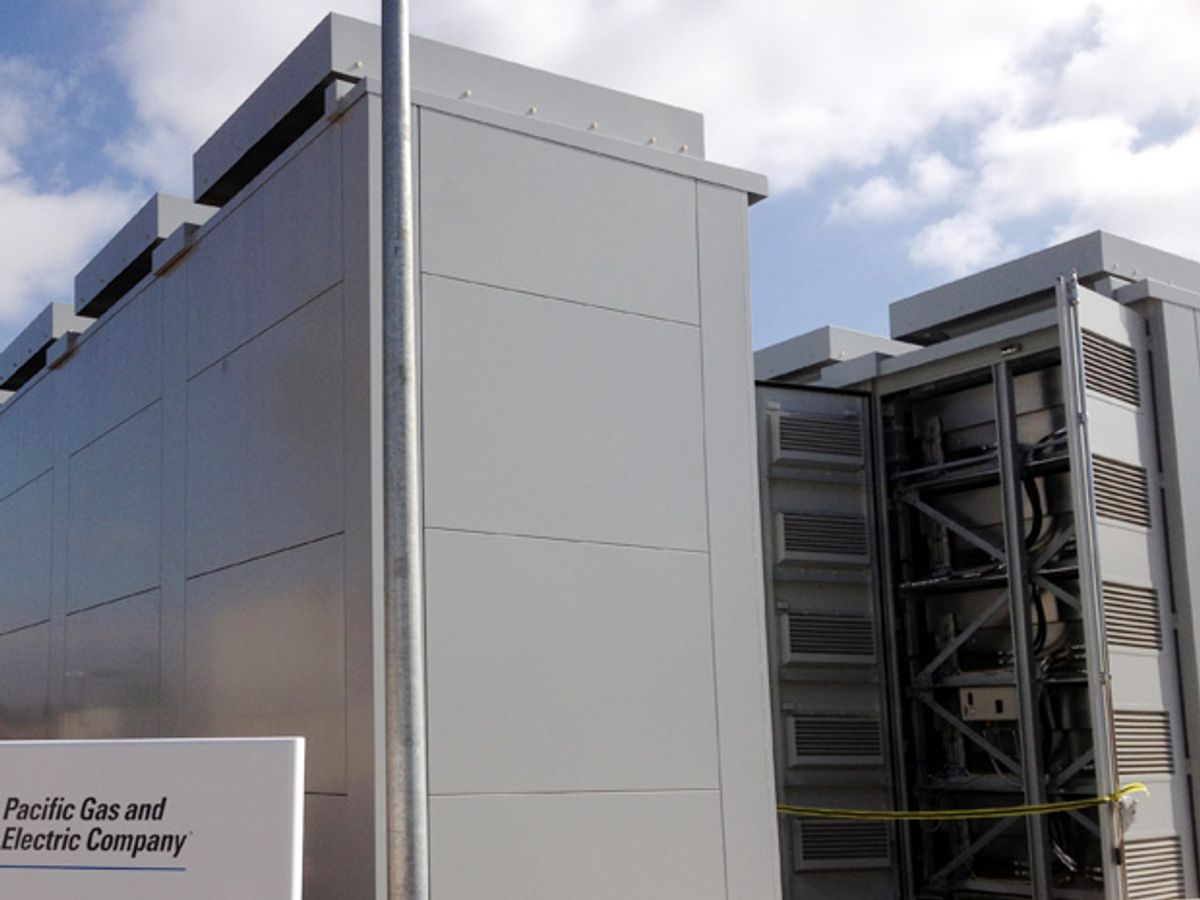A few weeks ago California passed the United States' first energy storage mandate. Issued by the California Public Utilities Commission (CPUC), the mandate commits all investor-owned utilities in the state to collectively buy what the mandate refers to as “1325 megawatts of energy storage” by 2020.
But as many Spectrum readers pointed out in the comments section of a recent Energywise post, energy storage is usually measured in units of energy, like joules or megawatt-hours, not units of power like megawatts. So what does it mean to ask utilities to prepare 1325 megawatts of energy storage?
Presenting the stipulations of the mandate in megawatts was "on purpose; it was deliberate," says Haresh Kamath, a program manager at the Electric Power Research Institute (EPRI), in Palo Alto. "But there’s no question it was a little bit surprising that it was only megawatts and not megawatt-hours.”
EPRI provided the CPUC with analysis and metrics on the cost efficacy of today's energy storage options. Kamath says that the issue was brought up repeatedly in the proceedings surrounding the mandate, but CPUC wanted the utilities to have maximum flexibility in how they implemented the storage systems.
“They did not want to specify a duration, they just wanted to specify a certain percentage of the grid, or a certain amount of megawatts,” Kamath says. “If 15 minutes of storage is enough to bring value in this context then that’s what it is. If you need eight hours of storage then that’s what you need. It’s an interesting approach to the flexibility of it.”
The utilities won’t be the only ones making the decisions about how much energy needs storing, because the storage systems will have diverse owners. The mandate specifies that the utilities cannot own more than 50 percent of the storage projects they propose, with the goals of leaving room for free market growth and finding the right group for a given job. If a third-party is more suited to executing part of a storage plan than a utility, there is room in the mandate for that. Whatever the utilities and third parties choose to do with the energy storage, it must first be judged to be cost-effective by the CPUC, and the burden of proof rests on the owners.
In order to hit the 1325-MW target, the utilities must plan for energy losses during the process of storing energy and later making it available on the grid. But Kamath says that the 1325 MW only represent about 2 to 3 percent of the California grid, so the losses and extra capacity required to cover them shouldn’t be too significant when compared with what utilities are already generating.



